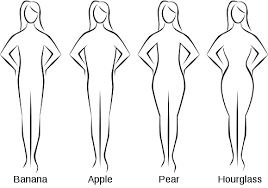Understanding your body shape is one of the simplest yet most powerful ways to unlock better health, boost your confidence, and dress in a way that truly flatters you. Whether you’re working on a fitness goal, shopping for clothes, or just getting to know your body better, a Body Shape Calculator can make a huge difference.
In this guide, we’ll cover:
-
What is a body shape calculator?
-
The main body types and their traits
-
How to measure your body accurately
-
Benefits of knowing your body shape
-
How body shape impacts health and lifestyle
-
Common myths about body types
Let’s dive in.
What Is a Body Shape Calculator?
A Body Shape Calculator is an online tool that helps you identify your body type using your key body measurements—usually your bust, waist, hips, and sometimes shoulders. Based on the ratios between these parts, the tool classifies your body into categories like:
-
Hourglass
-
Pear
-
Apple
-
Rectangle
-
Inverted Triangle
Each shape has its own physical characteristics and implications for fitness, health, and fashion.
You can try it here: Body Shape Calculator
The Main Body Types Explained
Here are the five most common body types that most calculators identify:
1. Hourglass
-
Balanced bust and hips
-
Well-defined waist
-
Feminine and proportionate
Common Style Tip: Fitted clothing that highlights the waist works best.
2. Pear (Triangle)
-
Hips are wider than shoulders
-
Weight tends to sit in the lower body
Style Tip: Emphasize the upper body to balance the silhouette.
3. Apple (Round)
-
Wider midsection, often with slim legs
-
Bust and waist are similar in size
Style Tip: Flowing tops and structured jackets help elongate the torso.
4. Rectangle (Straight)
-
Bust, waist, and hips are nearly the same width
-
Little waist definition
Style Tip: Use belts and peplum designs to create curves.
5. Inverted Triangle
-
Shoulders are broader than hips
-
Often seen in athletic builds
Style Tip: Add volume to the lower body to balance proportions.
How to Take Accurate Body Measurements
To get reliable results from a body shape calculator, accurate measurements are key. Here’s how to measure:
-
Bust: Wrap the tape around the fullest part of your chest.
-
Waist: Measure around the narrowest point (usually just above the belly button).
-
Hips: Measure around the widest part of your hips and buttocks.
-
Shoulders (optional): Measure from one shoulder edge across to the other.
Pro Tip: Use a mirror or ask someone to help for the most accurate numbers.
Why Knowing Your Body Shape Matters
1. Improves Your Style Choices
Knowing your body shape allows you to dress in a way that flatters your natural silhouette. You’ll waste less money on clothes that don’t fit or feel right.
2. Helps You Set Better Fitness Goals
Different body types respond to diet and exercise in different ways. For example:
-
Pear shapes may store fat in the lower body.
-
Apple shapes might gain weight around the belly first.
Knowing this helps you personalize your fitness strategy.
3. Offers Insights into Health Risks
Studies show that people with apple-shaped bodies (carrying more fat around the waist) may be at higher risk of:
-
Heart disease
-
Type 2 diabetes
-
High blood pressure
Using a Body Shape Calculator alongside tools like BMI or waist-to-hip ratio gives a fuller picture of your health.
How Is Body Shape Different from Body Size or Weight?
People often confuse shape with size. But someone can be:
-
A small-sized apple shape
-
A plus-size hourglass
Body shape is about proportions, not weight or dress size. This means two people with the same weight might have totally different shapes—and different needs.
Myths About Body Shapes (And What’s Actually True)
Myth 1: Hourglass is the “ideal” body shape.
Truth: All body shapes are normal and beautiful. Fashion trends may favor hourglass shapes, but each type has unique strengths.
Myth 2: You can change your body shape.
Truth: You can tone or build muscle, but your natural bone structure and fat distribution largely determine your body shape.
Myth 3: Body shape determines attractiveness.
Truth: Confidence, health, and how you carry yourself matter more than shape.
Can Your Body Shape Change Over Time?
Yes, and it’s completely normal!
Factors that affect your body shape over time:
-
Age
-
Pregnancy
-
Hormones
-
Menopause
-
Weight gain or loss
That’s why it’s helpful to revisit tools like the Body Shape Calculator periodically.
Fitness Tips Based on Body Shape
Here’s a quick look at what workouts can support your shape:
| Body Shape | Focus Area | Ideal Exercises |
|---|---|---|
| Hourglass | Overall balance | Pilates, yoga, strength training |
| Pear | Lower body + core | Squats, lunges, upper-body strength |
| Apple | Core & cardio | HIIT, walking, planks, swimming |
| Rectangle | Create curves | Weight training, glute-focused work |
| Inverted | Lower body balance | Cycling, leg day, resistance bands |
Clothing Tips by Body Type
Dressing by body type makes a noticeable difference. Here’s a cheat sheet:
-
Hourglass: Bodycon dresses, wrap tops, belted coats
-
Pear: A-line skirts, off-shoulder tops, flared pants
-
Apple: Empire waist dresses, flowy blouses
-
Rectangle: Ruffles, layers, high-waist jeans
-
Inverted Triangle: V-necks, wide-leg pants, peplum tops
Final Thoughts: Use the Body Shape Calculator to Know Yourself Better
Your body shape is not a label—it’s a tool. It helps you understand your strengths, style better, and make smarter fitness or wellness decisions. Whether you’re shopping smarter, eating healthier, or working out more efficiently, a simple tool like the Body Shape Calculator is your new best friend.
Remember: Beauty is not about fitting a mold. It’s about knowing your body, owning it, and treating it with care.







